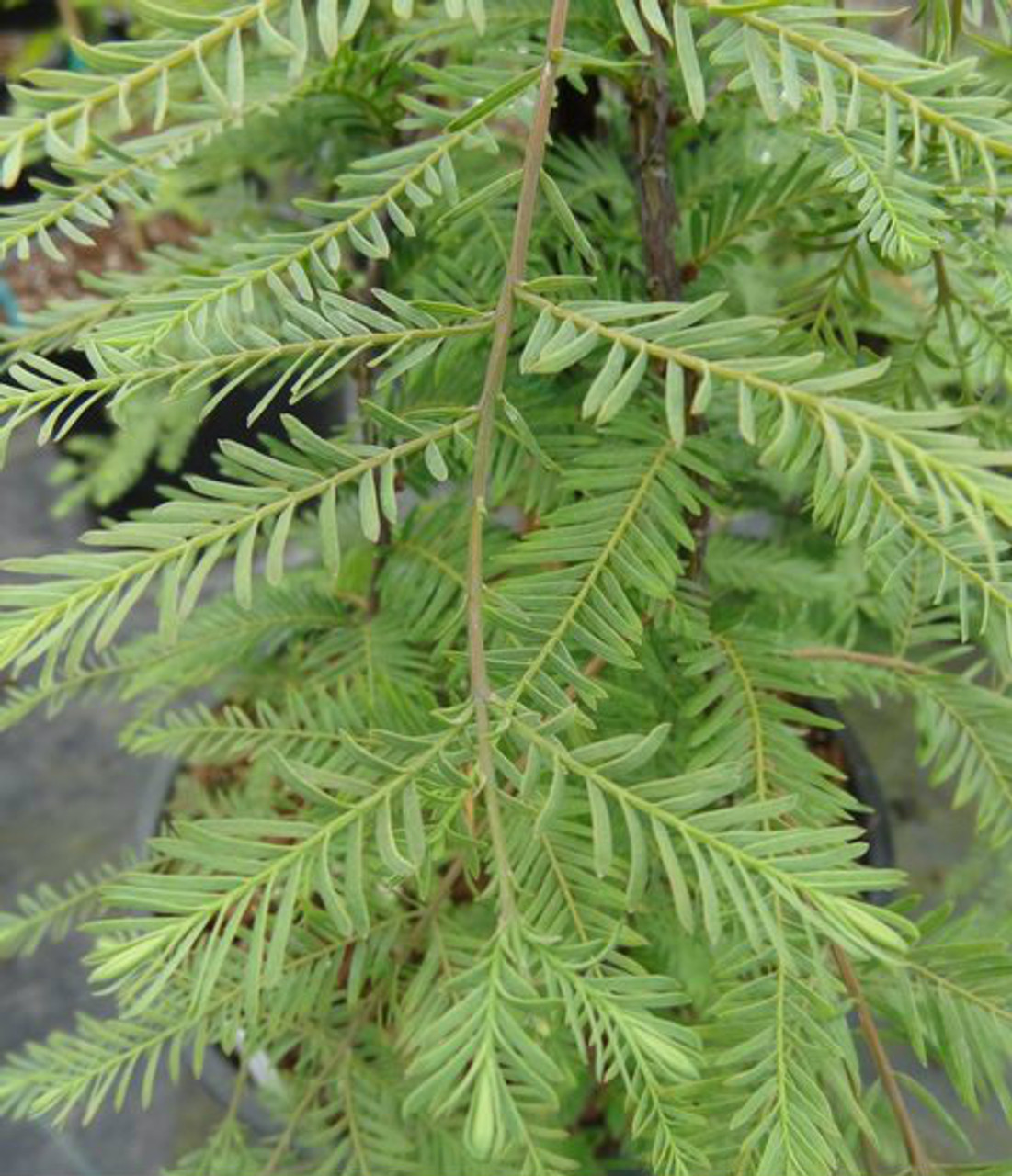


A short time later, in July 1943, Chan Wang, a scientist with China’s National Bureau of Forest Research, discovered a tree growing in a small, remote village in West-Central China that he believed could be new to science. The genus consisted of 3 species that were all thought to be long extinct, but were found extensively in fossil beds throughout the Northern Hemisphere. Metasequoia fossils had long been a part of many Northern Hemisphere collections under a variety of incorrect names, but it was Miki that was first able to describe the genus correctly. In 1941, a Japanese paleobotanist described a sequoia-like species from fossils of the plant found in Pliocene fossil beds near Tokyo, naming it Metasequoia.

This discovery has been noted to be one of the greatest for botany in the 20th century and the story behind the find is certainly a noteworthy tale in world history. The cultivar ‘National’ grows to 85 feet tall.Have you ever wondered what the earth looked like when the dinosaurs roamed? Humans didn’t realize that we have a living fossil among us that offers a glimpse into the past until the 1940s when the dawn redwood tree ( Metasequoia glyptostroboides) was “discovered” by scientists in China. Propagation is from seeds or cuttings taken in late summer. It appears to be adapted to clay soil and grows best when located on continually moist sites with slightly acidic soil. The preferred soil is moist and moderately fertile, but Metasequoia does not appear to be impacted by drought, having survived in urban landscapes during recent summer droughts. The tree grows rapidly but late season growth may be injured by early frosts. Lower branches should be left on the tree for most other uses to enjoy the graceful form and delightful foliage. The tree has been used primarily as a specimen, but there are reports of it being very tolerant of air pollution and it has done well as a street tree with lower branches removed. Soil tolerances: clay loam sand acidic extended flooding well-drained.
Metasequoia dawn redwood full#
Light requirement: tree grows best in full sun. It has been discovered that Metasequoia will thrive in standing water, much like the baldcypress, and if left branched to the ground in full sun, will develop the large, contorted boles that have made it famous. This rapid rate of growth has led to consideration for using the tree in forestry plantations. Planted specimens have already reached 25-40 m in height and 1-1.3 m in diameter, despite being in cultivation for under 60 years. Metasequoia has proved an easy tree to grow in temperate regions, and is now widely planted as an ornamental tree. More widespread seed-collecting expeditions in China in the 1990s sought to resolve this problem and restore genetic diversity to cultivated Metasequoia. This was because most of the trees were grown from seeds and cuttings derived from as few as three trees that the Arnold Arboretum had used as its source. In the late 1980s, it was discovered that many of the second generation trees in cultivation suffered from inbreeding depression (extremely low genetic variability) which could lead to increased susceptibility to disease and reproductive failure. In 1948, the Arnold Arboretum of Harvard University sent an expedition to collect seeds and, soon after, seedling trees were distributed to various universities and arboreta worldwide for growth trials. These were not studied further until 1946 and only finally described as a new living species of Metasequoia in 1948 by Wan Chun Cheng and Hu Hsen Hsu. Metasequoia first showed up as fossils in the Mesozoic Era, (245-265 mya) and in 1944 a small stand of an unidentified tree was discovered in China in Modaoxi by Zhan Wang. The pollen cones are 5-6 mm long, produced on long spikes in early spring they are only produced on trees growing in regions with hot summers. The cones are globose to ovoid, 1.5-2.5 cm in diameter with 16-28 scales, arranged in opposite pairs in four rows, each pair at right angles to the adjacent pair they mature in about 8-9 months after pollination. The leaves are opposite, 1-3 cm long, and bright fresh green, turning a foxy red-brown in fall. While the bark and foliage are similar to the closely related redwood genus Sequoia, Metasequoia differs from the California redwood in that it is deciduous. Metasequoia, along with Sequoia, Sequoiadendron and several other genera, were reclassified from the Taxodiaceae family to Cupressaceae after DNA analysis became possible. It is the only living species in the ancient redwood genus Metasequoia, but three fossil species are known. Dawn Redwood is a fast-growing tree in the Cypress family native to the Sichuan-Hubei region of China.


 0 kommentar(er)
0 kommentar(er)
